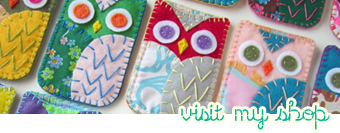By Jessica Santina
jessicas@newsreview.com
More stories by this author...
 Ashley Jennings posts illustrations like this one, as well as artistic house wares, for sale on Etsy. PHOTO BY LAUREN RANDOLPH |
Pamela Robinson had a hard time deciding what she wanted to be when she grew up. After graduating from Platt College in San Diego with a degree in graphic design, she eventually relocated to Reno and began a series of unfulfilling jobs—sign maker, seller of ski classes, model, teacher’s aid, physical therapist assistant …
“My interests were in so many different places, but I was never happy,” she says.
A few birthdays ago, she was given a sewing machine. She found some interesting scraps of fabric and made a few purses for family and friends, who loved them, and she realized she was onto something.
But while hawking her wares at a craft fair seemed like a good idea, she was quickly disappointed.
“Because of my design background, I had created my own marketing materials,” she says. “Everything was really professional … and nobody believed I made the purses myself. So I didn’t make any money. It was very discouraging. I packed everything up and put it in my attic.”
Then, in October 2007, she found herself on Etsy.com, an online marketplace for handmade goods.
“I was so excited, I was like, ‘Finally, I found my thing!’” says Robinson.
Back to the basics
Robinson’s thing, it turns out, is a lot of other people’s, too. As the RN&R reported in a Dec. 11 feature story, Do It Yourself culture is on the rise. Call it a response to the crappy economy, or a trend launched by such reality shows as Project Runway, but handmade is hot. Home improvement stores around the country are reporting increased enrollments in DIY classes, and craft store giant Michaels is one of the few retailers in the country reporting increased revenues this past holiday season.
And Etsy.com, which connects artisans and consumers around the world, broke records in November and December, taking on 135,000 new memberships and listing 1.1 million items for sale—more than doubling the previous year’s figures. Some artists even had to close their Etsy shops for the holidays when sales far exceeded projections, depleting their stocks.
“I’m proof you can definitely make money on Etsy,” says Robinson. “But you have to give 100 percent to make it work. It’s a full-time job.”
 Jen Graham sells some of her wares, like this embroidery, on Etsy.com PHOTO BY LAUREN RANDOLPH |
The science of selling
The site, which launched in 2005, explains that its mission is “to enable people to make a living making things, and to reconnect makers with buyers.” The site not only features the work of thousands of artists from around the world, but its commitment to quality, apparent in the clean look of the site, easy navigation and high-quality products, is in itself a marketing tool.
Buyers can search handmade or vintage items and supplies, as well as particular sellers, and can narrow searches by community or even color.
Sellers are walked through the fundamentals of creating and naming their shops and taking good photographs of their work, and can find marketing tools, connect with other artists, receive selling tips, track sales and even blog with other users. It costs 20 cents to list an item for four months—arguably less than one might pay for booth space at a craft fair, or to sell through local consignment shops, with far more exposure.
Ashley Jennings, a Reno artist who sells illustrations at PaisleyAnn.etsy.com, as well as plushes, furniture and pillows at PaisleyAnnHome.etsy.com, says that while she’s seen occasional great results on Etsy, it’s not easy. And it can end up being expensive.
“I think Etsy has more than 200,000 shops now, so to find one person is really difficult, and you have to relist over and over, at 20 cents each time, because items are listed by date,” says Jennings, explaining that while more shops obviously means more choice for shoppers, it can be discouraging to artists trying to stand out from the crowd.
Robinson’s first shop, BeadsInATwist, which she created for selling crochet jewelry, found great success—especially when she added her handbags to her product offerings.
“I had sold something like 87 handbags by the time I realized the shop name didn’t really fit,” she says. “I wanted to change to UniqueHandbags.net, and I knew a lot of people struggle with changing their names because you have a clientele that marks you as a favorite. But I took the risk because I was looking long-term.”
Her sales dropped markedly. Her handbag sales this holiday season only numbered around 10. Still, she sees things gradually picking up, and her belief in the potential holds firm. Robinson now operates two shops on Etsy—UniqueHandbags and Uniques, where she sells items such as leather accessories and jewelry.
Adrienne Mineiro, a local jewelry artist, just set up shop on Etsy last summer at TheVintageEmpire.etsy.com. Her sales thus far have been modest, but she remains optimistic.
“The amount of both finished goods and supplies you can find there is unequaled,” she says, referring to many of the vintage items she uses to make her jewelry, such as typewriter keys and pocket watch dials. “I wish I hadn’t invested the time and money in making my own website. I should have just started with Etsy. It’s incredibly inexpensive, and the framework is there, the e-commerce aspect, which is expensive to get on your own.”
Local sewer/crafter Bean Paulson sold 18 items in December—not bad, she says—on her site CoyoteCraft.etsy.com. She subscribes to the “under one roof” philosophy, choosing to sell all her products from one shop, which keeps users from having to click through. She has this advice: “Do a good job. Pay attention to detail. Take nice pictures. Make smaller things so you don’t have to charge a lot for international shipping. List and relist often, to make sure you stay near the top of the search results.”
 Pamela Robinson’s handbags looked too good to be true at craft fairs. She’s had better luck at La Bussola, where she is here, and on Etsy.com. PHOTO BY LAUREN RANDOLPH |
Teaming up
The artists agree on the following:
1) Never underestimate the power of good photography—without it, your work simply won’t sell; and 2) The greatest benefit of Etsy is its power to build community. None of them use Etsy exclusively—it’s one tool of many. Local artist Jen Graham, who sells photography and sewn objects through WormEatsBird.etsy.com, has had limited sales but finds that for local artists, Etsy’s resources are invaluable.
“You get a lot of great feedback, so you’re really forming a community,” she says, adding that the feedback she receives tells her what to make more (or less) of. “It’s hard for people doing this to survive, especially in this town. So with Etsy, I can get people from around the world buying my stuff.”
Capitalizing on the community aspect, Etsy recently launched another feature: Etsy Teams, which unites members by craft, community or other common interest, to share marketing resources, network, promote each other’s work or learn from each other. Jennings, Robinson and Paulson have formed a Reno-based team, Handmade Hustlers. Their ambitious promotional plans include online tutorials and regular local shows.
“People like to shop locally, I’m finding, but only if they can find good stuff,” says Jennings. “It’s just a matter of getting our names out there.”
And as Robinson has found, Etsy is an excellent way to start. “I’m so excited about the opportunity Etsy has given me. It’s given me so much confidence, and opened my eyes to a whole new way of life.”

































No comments:
Post a Comment